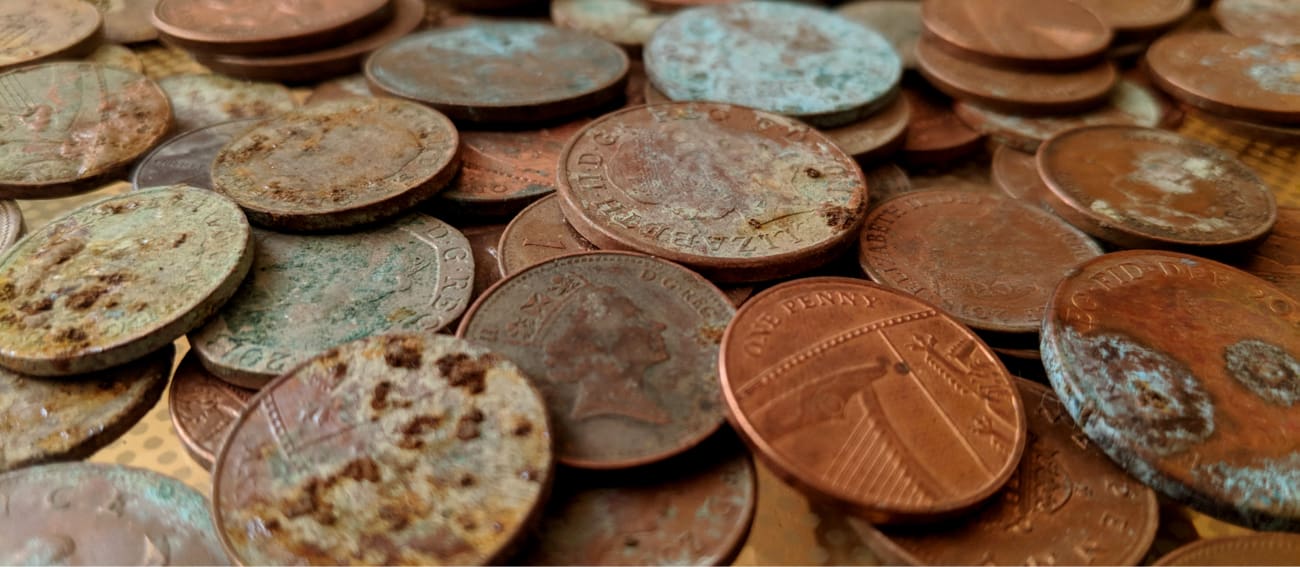Impeccable coins
Objective: Clean the rust present on copper coins

-
Laboratory materials
3 petri dishes
3 copper coins
pH paper
-
Reagents
Vinegar
Salt
Water
-
Questions
What can be observed? What is it happening?
Procedure
- In the first Petri dish, place a layer of vinegar (enough to cover the coin completely). In the second dish, add a layer of vinegar saturated with salt.
- In the third dish, add only water with salt.
- Place a copper coin in each Petri dish so that it is completely covered by the liquid. Wait 1-2 minutes and observe what happens.
- Measure the pH of the three solutions using pH paper.
- We rinse the coins thoroughly with water and dry them with paper.
Theoretical explanation
In contact with oxygen from the air, the copper in coins oxidizes, resulting in copper oxides. As a result, the coins lose their shine and become covered with an increasingly dark brown layer.
The characteristic color of these copper coins can be restored by attacking the oxide layer with an acid. Vinegar contains acetic acid (CH3COOH) and therefore cleans the coin, although it does so slowly because it is not a very strong acid. On the other hand, by adding salt to the Petri dish containing the vinegar, we generate hydrochloric acid (HCl), a strong acid that cleans the coin quickly. Finally, water and salt do not attack the oxide because they are not acidic.

Let's create a brighter future
Join our team to work with renowned researchers, tackle groundbreaking
projects and contribute to meaningful scientific advancements














